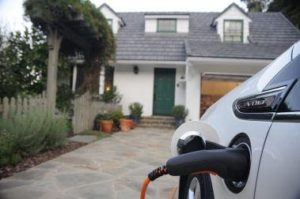 With shelter in place orders due to the pandemic, countless local government leaders focused on how their communities want to live and work in the future. Reach codes have been gaining increasing attention statewide because they can help increase economic competitiveness, reduce greenhouse gas (GHG) emissions, act on climate change, and help ensure new and existing homes are built and remodeled with the health and welfare of occupants in mind.
With shelter in place orders due to the pandemic, countless local government leaders focused on how their communities want to live and work in the future. Reach codes have been gaining increasing attention statewide because they can help increase economic competitiveness, reduce greenhouse gas (GHG) emissions, act on climate change, and help ensure new and existing homes are built and remodeled with the health and welfare of occupants in mind.
A reach code is a local building energy code that goes beyond or “reaches” past the state minimum requirements for energy use in building design and construction, usually to address issues such as GHG emissions targets, air quality, and public health and safety (inside and outside of buildings). Reach codes help buildings take advantage of an increasingly clean electrical grid.
“Moms are getting it done,” commented Ojai resident Michelle Ellison. Ellison is a tireless climate activist and mom known for working into the early morning hours while her children sleep. She added, “One of our electrification leaders is a Thousand Oaks mom who is working on a new electric reach code because her daughter is a track star with asthma. She was concerned about indoor air pollution from natural gas stoves.”
Ellison helped educate the Ojai City Council, which voted unanimously in November 2020 to adopt an all-electric reach code for nearly all new residential and commercial buildings. “People are making the connection between their health and the energy they use since they are spending so much time indoors. We are not waiting for the State to act. Electrifying our homes increases our economic competitiveness by lowering utility bills, and it can improve our health while reducing GHGs,” Ellison added.
Rocky Mountain Institute (RMI) wrote a report comparing the cost of building an all-electric single-family home to a home hooked-up to the gas system in seven cities around the U.S. and found that all-electric homes saved money and reduced carbon pollution in every case.
Cities interested in pursuing reach codes get free technical assistance from the Statewide Utilities Code and Standards Program, points out Amy Rider, Principal at Archamy Consulting, who works with local governments across California on behalf of the Building Decarbonization Coalition.
While more electric incentives are working their way through the California Public Utilities Commission, builders already benefit from new construction incentives of $2,000 per single family home and $1,000 per multifamily unit offered through the California Advanced Homes Program. These homes must be all-electric, with no gas to the site and be 8.5% more efficient than the 2019 energy standards.

